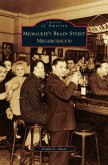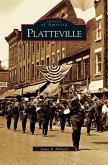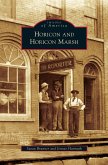Marshfield owes its existence to the twin factors of railroads and timber. The first permanent white settlers, the Rivers brothers, built a two-room hotel in Marshfield because they heard that Wisconsin Central Railroad crews would travel through on the way to Ashland, Wisconsin. The brothers had a saloon, a sleeping room with bunk beds, and food ready and waiting when the railway crews arrived in 1872. Marshfield's central location made it a crossroads for up to five railroad lines, with 1,000 freight cars and 28 passenger trains passing through per day in 1893. Timber led to the establishment of sawmills, stave and heading mills, and shingle and veneer factories. As the timberland was clear-cut, the townspeople turned to agriculture. New industries appeared, including dairies, a pickle factory, a brewery, and several cigar factories. Today, one of the dominant industries is health care, with extensive medical research being conducted at the Marshfield Clinic.
Hinweis: Dieser Artikel kann nur an eine deutsche Lieferadresse ausgeliefert werden.
Hinweis: Dieser Artikel kann nur an eine deutsche Lieferadresse ausgeliefert werden.








